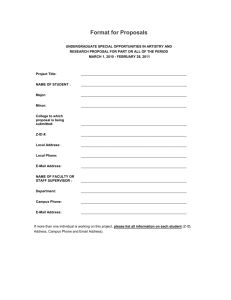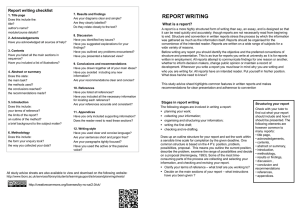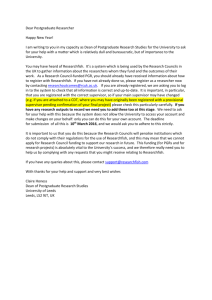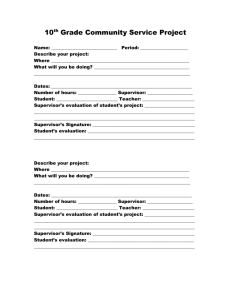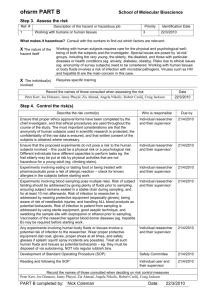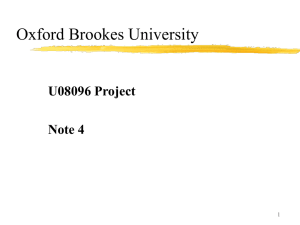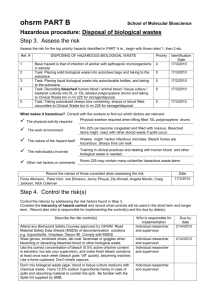KON Master Communicator Series Module 1
advertisement
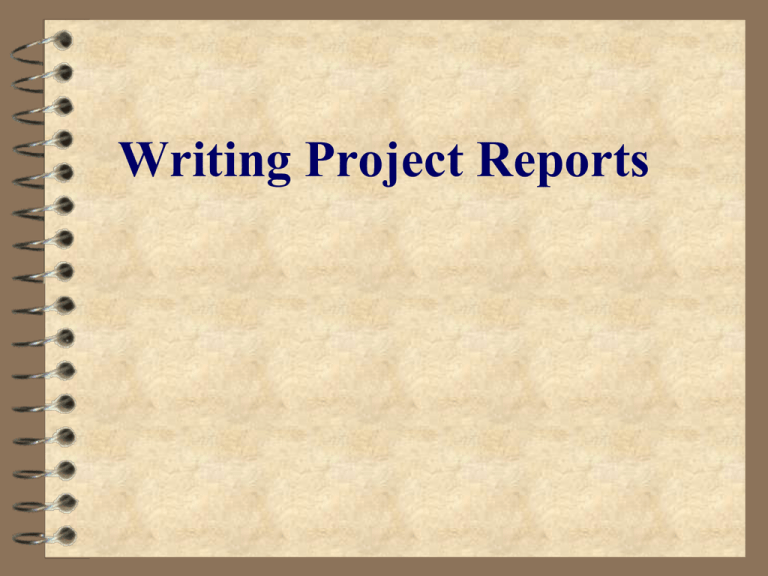
Writing Project Reports Purpose of a report: writing to be read Central goal: Report is written to be read by someone else. Have in mind, your intended audience. First possibility: report read by yourself, advisor and evaluation committee. Has little value. Next Broader possibility: report readable by your peers and your juniors down the line. Has greater value Best possibility: Report is a publishable quantity. Useful for technical community in general. The Structure of Your Report Cover page and title page Bonafide Certificate Abstract Acknowledgements Table of contents List of Tables List of Figures Reference work or Literature List of Symbols, Abbreviations and Nomenclature Introduction review General Objective Specific Objective Background Body of report Illustrations using graphs, tables, charts, diagrams and flow charts. Conclusions and Future scope References Cover page and title page This should include the project title and the name of the author of the report. You can also list the name of your supervisor if you wish. The title should reflect what you have done and should bring out any eye-catching factor of your work, for good impact. Cover page and title page Bonafide Certificate Abstract The abstract should be short, generally about 2 paragraphs. The abstract should contain the essence of the report. It can contain the following: main motivation, main design point, essential difference from previous work, methodology, and some eyecatching results if any. Acknowledgements Here you thank those individuals who have provided particularly useful assistance, technical or otherwise, during your project. Your supervisor will obviously be pleased to be acknowledged as he or she will have invested quite a lot of time overseeing your progress. Table of Contents This should list the main chapters and (sub)sections of your report. Choose self-explanatory chapter and section titles and use double spacing for clarity. Include page numbers indicating where each chapter/section begins. Try to avoid too many levels of subheading - three is sufficient. Introduction This is one of the most important components of the report. It should begin with a clear statement of what the project is, so that the nature & scope of the project can be understood by a lay reader. It should summarise everything you set out to achieve, provide a clear summary of the project's background, relevance and main contributions. The introduction should set the context for the project and should provide the reader with a summary of the key things to look out for in the remainder of the report. Reference work or Literature Review It is common to have this as a separate section, explaining why what you have done is something novel. Here, you must try to think of dimensions of comparison of your work with other work. For instance, you may compare in terms of functionality, in terms of performance, and/or in terms of approach. General and Specific Objective Research objectives is a concrete statement describing what the research is trying to achieve. A well-worded objective will be SMART, i.e Specific, Measurable, Attainable, Realistic, & Time-bound. General objective: General objectives are broad goals to be achieved. The general objectives of the study state what the researcher expects to achieve by the study in general terms. General objectives are usually less in number. General and Specific Objective Specific objective Specific objectives are short term & narrow in focus. General objectives can broken into small logically connected parts to form specific objectives. General objective is met through accomplishing all the specific objective. The specific objectives are more in number & they systematically address various aspects of problem as defined under ‘the statement of problem’ & key factor that is assumed to influence or causes the problem. They should specify what the researcher will do in the study, where, & for what purpose. Background The background section of the report should set the project into context and give the proposed layout for achieving the project goals. The background section can be included as part of the introduction but is usually better as a separate chapter. Body of the report Consists of three or four chapters detailing the technical work undertaken during the project. They can reflect the chronological development of the project, e.g. design, implementation, experimentation, optimization, evaluation etc. If you have built a new piece of software, you should describe and justify the design of your program at some high level. It should also document any interesting problems with, or features of, your implementation. You need to discuss the content of these sections thoroughly with your supervisor. Various Illustrations The cliche "a picture is worth a thousand words" is appropriate here. Spend time thinking about pictures. Wherever necessary, explain all aspects of a figure (ideally, this should be easy). Do not leave the reader wondering as to what the connection between the figure and the text is. While describing a table, you have to describe every row/column. And similarly while describing a graph, you have to describe the x/y axes. Conclusions and Future Scope The project's conclusions should list the things which have been learnt as a result of the work you have done. It is common to finish the report by listing ways in which the project can be taken further. This might, for example, be a plan for doing the project better if you had a chance to do it again, turning the project deliverables into a more polished end product. References This consists of a list of all the books, articles, manuals etc. used in the project and referred to in the report. In the case of a text book you should quote the name of the publisher as well as the author(s). A weakness of many reports is inadequate citation of a source of information. Each entry in the bibliography should list the author(s) and title of the piece of work and should give full details of where it can be found. Appendix The appendices contain information which is peripheral to the main body of the report. Information typically included are things like parts of the code, tables, test cases or any other material which would break up the theme of the text if it appeared in situ.
